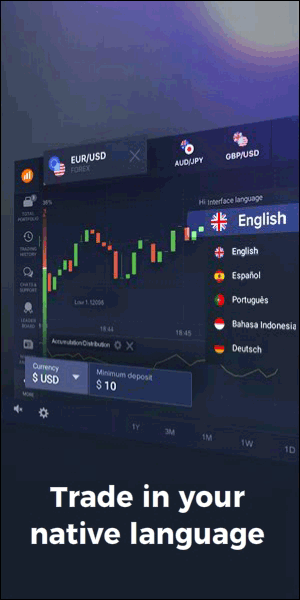The Digital Banking Revolution: A Comparative Analysis of Leading Platforms
In the era of digital transformation, the finance industry has seen a significant shift with the advent of fintech companies that offer innovative banking and financial services solutions. Among these, Revolut, Zen, Curve, N26, Bunq, and Wise stand out for their unique value propositions. This article delves into an in-depth comparison of these platforms, focusing on their features, benefits, and how they are reshaping the financial landscape.
Introduction
The financial sector has been undergoing a radical transformation, thanks to the proliferation of fintech startups. These digital-first entities are challenging traditional banks by offering flexible, user-friendly, and cost-effective solutions. This article compares seven frontrunners in this space: Revolut, Zen, Curve, N26, Bunq, and Wise, to understand their offerings, market positioning, and how they cater to the needs of modern consumers.
Overview of the Platforms:
Revolut
Founded in 2015, Revolut started as a digital banking alternative, offering currency exchange, budgeting tools, and P2P payments. It has rapidly expanded its services to include cryptocurrency trading, savings vaults, and international money transfers, positioning itself as a comprehensive financial super app.
In an age where digital transformation is reshaping the banking industry, Revolut stands out as a frontrunner in the fintech revolution. With its promise of seamless financial transactions, budgeting tools, and global currency exchange at the touch of a button, Revolut has garnered a substantial user base. However, like any financial service, it comes with its set of challenges and limitations. This article aims to explore the multifaceted aspects of holding a Revolut account, shedding light on both its merits and drawbacks.
The Pros of a Revolut Account
Seamless International Currency Exchange
Revolut’s most lauded feature is its ability to facilitate real-time currency exchange at interbank rates, offering significant savings on transactions and conversions. Users can hold and exchange multiple currencies within the app, making it an indispensable tool for travelers and international businesses.
Innovative Financial Management Tools
The platform offers a suite of budgeting and analytics tools that allow users to track their spending by category, set monthly budgets, and receive instant spending notifications. These features empower users to manage their finances more effectively and make informed decisions about their spending habits.
Robust Security Features
Revolut places a high emphasis on security, employing features such as fingerprint and facial recognition, disposable virtual cards for online transactions, and the ability to freeze and unfreeze physical cards instantly via the app. These measures provide users with peace of mind and control over their account security.
Cryptocurrency Support
For those interested in the burgeoning world of digital currencies, Revolut offers a straightforward way to buy, hold, and exchange popular cryptocurrencies directly from the app. This feature simplifies the often complex world of cryptocurrency investment for the average user.
The Cons of a Revolut Account
Limited Customer Support
One common critique of Revolut is its customer support, which primarily operates through in-app chat. Users have reported delays in response times, particularly during peak times, which can be frustrating for those in need of immediate assistance.
Dependence on the App
Revolut’s functionality is deeply integrated into its mobile app, requiring users to have a compatible smartphone and a stable internet connection. This reliance can be limiting for individuals who prefer traditional banking methods or lack consistent access to technology.
Account Limitations and Restrictions
Some users may face account limitations, such as caps on free ATM withdrawals or currency exchanges, which are contingent on the user’s chosen plan. Additionally, Revolut has been known to freeze accounts with unusual activity as a security measure, which can temporarily inconvenience legitimate users.
Charges and Fees for Premium Services
While Revolut offers a basic free account, accessing more advanced features and higher limits requires upgrading to paid plans. Users should weigh the benefits of these services against the subscription costs to determine if the value aligns with their needs.
Comparative Analysis with Traditional Banks
When compared to traditional banking institutions, Revolut offers a more flexible and tech-savvy approach to managing finances. However, it may lack some of the personalized services and extensive branch networks that established banks provide.
Future Outlook and Developments
Revolut continues to expand its offerings, exploring new financial products, and entering additional markets. As the platform evolves, it is likely to address some of the current limitations and introduce even more innovative features.
REVOLUT – Conclusion
Revolut represents a significant shift towards more accessible, flexible, and user-centric financial services. Its strengths lie in its innovative features, such as real-time currency exchange, comprehensive financial management tools, and robust security measures. However, potential users should also consider the limitations, including the reliance on digital interfaces, potential.
Zen
Zen offers a blend of e-commerce and banking solutions, focusing on providing a seamless shopping experience alongside traditional banking features. Its services include cashback on purchases, extended warranties, and a unique shared family account feature.
Zen account, a product of the digital era, aims to redefine personal finance management by integrating e-commerce and banking services. It offers a unique proposition by combining convenient payment options, financial tracking, and additional perks designed to enhance the shopping experience. This section will introduce Zen account, setting the stage for a detailed analysis of its pros and cons.
Pros of Zen Account
Seamless Integration with E-commerce
Zen account stands out for its seamless integration with various e-commerce platforms, offering users a frictionless shopping experience. This integration facilitates instant payments, real-time transaction tracking, and exclusive discounts, adding value to the online shopping journey.
Innovative Financial Features
At its core, Zen account boasts an array of innovative financial features aimed at simplifying money management. These include:
- Instant notifications on transactions to keep users informed in real-time.
- Virtual and physical cards to accommodate different payment preferences.
- Flexible account management options, allowing for personalized financial organization.
User-Centric Security Measures
Zen account prioritizes security with advanced measures designed to protect users’ financial data and transactions. Features like biometric authentication, end-to-end encryption, and real-time fraud monitoring offer peace of mind in an increasingly digital world.
Added Value Services
Beyond basic banking, Zen account enriches its offering with added value services, including:
- Extended warranties on products purchased through the account.
- Cashback incentives on select transactions, enhancing savings.
- Family accounts, enabling shared financial management among family members.
Cons of Zen Account
Limited Physical Branch Accessibility
As a digital-first platform, Zen account’s limited physical presence may deter users who prefer in-person banking services. This section will discuss the implications of this digital-only model.
Geographical Restrictions
Despite its global ambitions, Zen account faces geographical limitations that restrict its services in certain regions. This part will explore how these restrictions impact potential users outside the supported areas.
Fee Structure Complexity
While offering numerous benefits, Zen account’s fee structure can be complex, encompassing various charges for different services. This complexity may confuse users, particularly those new to digital banking.
Customer Support Challenges
Given its digital nature, Zen account’s customer support primarily operates online, which might not always meet the immediate needs of users facing urgent issues. The effectiveness and responsiveness of its support channels will be analyzed here.
Comparative Analysis with Other Digital Banking Solutions
This section will place Zen account in the broader context of digital banking, comparing its features, benefits, and limitations against other leading platforms. This comparative analysis will help readers understand Zen account’s market position and unique value proposition.
Conclusion: Weighing the Balance
The Zen account offers a compelling blend of e-commerce integration, innovative banking features, and user-centric security measures, making it an attractive option for digital-savvy consumers. However, its limitations, such as the digital-only model and geographical restrictions, may not suit everyone’s needs.
In sum, Zen account embodies the future of banking, where convenience, security, and value-added services are paramount. Prospective users should weigh these factors against the account’s limitations to make an informed decision that aligns with their financial habits and preferences.
Curve
Curve distinguishes itself by allowing users to consolidate multiple bank cards into a single Curve card, managed through its app. This provides a convenient way to manage finances across different accounts, with features like instant notifications, spending insights, and easy currency exchange.
Curve is not just another financial service; it’s a game-changer in how we manage our money. By allowing users to link multiple debit and credit cards to one Curve card, it offers a level of convenience and control unmatched by traditional banking methods. This introduction sets the stage for a detailed exploration of Curve’s benefits and limitations.
Pros of Curve
Convenience and Simplification
- **One Card to Rule Them All**: Curve users enjoy the simplicity of carrying just one card for all transactions, decluttering wallets and streamlining spending.
- **Easy Management Through the App**: Curve’s app provides a centralized platform for managing finances, including instant notifications and spending analytics.
Enhanced Security Features
- **Lock and Unlock Feature**: The ability to instantly freeze and unfreeze the Curve card through the app offers peace of mind in case of loss or theft.
- **Real-time Alerts**: Receive immediate notifications for every transaction, enabling quick detection of unauthorized use.
Financial Flexibility
- **Go Back in Time**: Curve’s unique feature allows users to switch the card used for a transaction up to 14 days after, offering unparalleled post-purchase flexibility.
- **No Foreign Transaction Fees**: For travelers, Curve offers significant savings by eliminating foreign transaction fees on purchases made abroad.
Rewards and Benefits
- **Cashback Offers**: Curve provides cashback rewards at selected retailers, adding value to every transaction.
- **Travel Insurance**: Premium Curve accounts come with travel insurance benefits, adding an extra layer of protection for international travelers.
Cons of Curve
Dependence on Underlying Cards
- **Limited by Linked Cards**: Curve’s functionality is inherently tied to the performance and availability of the linked debit and credit cards.
- **No Direct Banking Features**: Unlike traditional bank accounts, Curve does not offer direct deposit, lending, or interest-bearing accounts.
Fee Structure for Premium Services
- **Subscription Costs**: Access to premium features such as higher cashback percentages and travel insurance requires a monthly subscription fee.
- **ATM Withdrawal Limits**: Free withdrawals are capped, and exceeding the limit incurs fees, a potential drawback for heavy cash users.
Geographical and Transaction Limitations
- **Limited Availability**: Curve’s services are not available worldwide, restricting its use to specific regions.
- **Merchant Acceptance**: Some merchants may not accept Curve due to its unique processing method, potentially limiting its use.
Customer Service and Dispute Resolution
- **Customer Support**: As with many fintech services, users may experience delays or challenges in resolving issues through customer service.
- **Dispute Handling**: Disputes involving transactions made with the Curve card may involve more complexity due to the intermediary nature of the service.
Conclusion: Weighing the Balance
The Curve account stands out for its innovative approach to financial management, offering significant benefits in terms of convenience, security, and flexibility. However, potential users must also consider the limitations, including dependency on underlying cards, fee structures, and geographical restrictions. Ultimately, the decision to use Curve should be informed by an individual’s specific financial habits, needs, and preferences. As the fintech landscape continues to evolve, Curve remains a compelling option for those seeking to streamline their financial life in a modern, tech-savvy way.
N26
N26 is known for its user-friendly interface and straightforward banking solutions. It offers a range of services from basic checking accounts to premium options with travel insurance, no foreign transaction fees, and spaces for organizing savings.
Pros of an N26 Account
User Experience
One of N26’s standout features is its emphasis on a seamless user experience. The mobile app is designed with simplicity and intuitiveness in mind, allowing users to manage their finances with ease. Features such as real-time transaction notifications, spending analytics, and instant money transfers contribute to a hassle-free banking experience.
No Hidden Fees
N26 promotes transparency in its fee structure, offering a basic account with no maintenance fees. This is a significant advantage for users tired of the often complex and hidden fees associated with traditional banks.
Global Usability
With its focus on serving the needs of travelers and digital nomads, N26 provides a globally oriented banking solution. The account comes with minimal foreign transaction fees and free ATM withdrawals in multiple currencies, making it an ideal choice for international usage.
Innovative Features
- Spaces: N26’s Spaces feature allows users to create sub-accounts for specific savings goals, providing a simple way to organize and track progress.
- Insurance Options: Higher-tier accounts offer integrated insurance packages, covering travel, mobile phones, and more, directly through the app.
Cons of an N26 Account
Limited Physical Presence
As a fully digital bank, N26 lacks a physical branch network, which can be a drawback for those who prefer in-person banking services or need to deposit cash regularly.
Customer Service Concerns
Some users have reported challenges with N26’s customer service, particularly in terms of response times and resolution efficiency. This can be a significant consideration for those who value robust support from their banking provider.
Account Limitations
While N26 offers a range of services, it may not fully replace traditional banks for all users. Limitations in areas such as loan offerings or more complex financial products may require users to maintain accounts with other financial institutions.
Availability
N26’s availability is limited to certain countries, and its features can vary significantly by region. Potential users should verify the services offered in their country before deciding to switch.
Conclusion: Weighing the Balance
The decision to open an N26 account, like any financial decision, should be made after carefully considering one’s personal banking needs and preferences. The pros of N26, such as its user-friendly approach, lack of hidden fees, and international usability, make it an attractive option for the tech-savvy and those with a global lifestyle. However, its limitations, including the lack of physical branches and potential customer service issues, may make it less suitable for those who value traditional banking services or require more personalized support.
In conclusion, N26 represents a significant shift towards a more digital and user-centered banking experience, challenging traditional banking norms and offering a glimpse into the future of personal finance management. As the digital banking sector continues to evolve, N26’s role in shaping these changes will undoubtedly be a topic of interest for consumers and industry observers alike.
Bunq
Bunq focuses on providing a socially responsible banking experience. It offers features like multiple sub-accounts, real-time transaction notifications, and the ability to plant trees with card purchases, appealing to environmentally conscious consumers.
Bunq, a fintech company based in the Netherlands, has been redefining the traditional banking experience with its mobile-first approach. Founded with the vision of making banking better, easier, and more sustainable, Bunq offers a range of features designed to cater to the modern, environmentally-conscious consumer. Let’s explore the benefits and drawbacks of becoming a Bunq user.
The Pros of Bunq
Innovative Banking Features
Bunq offers several unique features that set it apart from traditional banks:
- Multiple Sub-Accounts: Users can create up to 25 sub-accounts, each with its IBAN, to organize finances for different goals or expenses.
- Real-Time Transaction Notifications: Instant updates on account activity help users stay informed about their finances.
- Freedom of Choice: Bunq allows users to choose how their money is invested, offering options that align with their personal values.
Commitment to Sustainability
Bunq’s dedication to the environment is evident in its initiatives:
- Tree Planting Program: For every €100 spent with Bunq cards, a tree is planted, contributing to reforestation efforts globally.
- Green Investments: Bunq invests in green and sustainable projects, supporting a healthier planet.
Global Usability
With features like fee-free currency conversion and worldwide ATM withdrawals, Bunq is designed for international users:
- Travel-friendly: Competitive exchange rates and global acceptance make Bunq a great travel companion.
- Multi-Currency Accounts: Users can hold and manage multiple currencies, easing cross-border transactions.
The Cons of Bunq
Subscription Fees
Unlike some digital banks that offer free basic accounts, Bunq’s services come with a monthly subscription fee:
- Users need to weigh the benefits against the cost to determine if the value aligns with their banking needs.
Limited Physical Presence
As a digital-only bank, Bunq lacks physical branches:
- This might be a drawback for those who prefer in-person banking services or need to deposit cash regularly.
Complexity for Basic Users
The extensive features and options Bunq offers can be overwhelming for users seeking simple banking solutions:
- Those who prefer a straightforward checking or savings account might find Bunq’s array of choices daunting.
Comparative Analysis
When compared to other fintech and traditional banks, Bunq stands out for its innovative features and environmental initiatives. However, the subscription model and digital-only approach might not suit everyone’s preferences or financial habits.
Conclusion: Balancing the Scales
Bunq offers a unique blend of modern banking features, a commitment to sustainability, and global usability, making it an attractive option for the eco-conscious and tech-savvy consumer. However, the subscription fees, lack of physical branches, and potential complexity for basic banking needs present some considerations. Ultimately, whether Bunq is the right choice depends on your banking priorities, lifestyle, and values. By weighing these pros and cons, you can make an informed decision that best suits your financial needs.
Wise
Formerly known as TransferWise, Wise is renowned for its transparent, low-cost international money transfers. It has expanded its services to include multi-currency accounts, debit cards, and a feature for receiving payments like a local in different regions.
Wise has redefined the way we think about managing money across borders. Born out of frustration with the high fees and opaque exchange rates of traditional banks, Wise’s mission is straightforward: to make international money transfers cheap, fair, and simple. This ethos extends to the Wise account, a financial product designed to serve the needs of those who live, work, and play in multiple currencies.
The Pros of a Wise Account
Transparent and Low Fees
Wise prides itself on its transparent fee structure, ensuring users know exactly what they’re paying for. Unlike traditional banks, which often hide fees in inflated exchange rates, Wise charges a small, upfront fee and uses the real mid-market exchange rate for currency conversion.
Multi-Currency Convenience
The Wise account allows users to hold, manage, and convert between over 50 currencies. This multi-currency functionality is a boon for anyone dealing with finances in multiple countries, offering the flexibility to pay and get paid in local currencies without exorbitant bank charges.
Debit Card Accessibility
Wise also offers a debit card linked to the multi-currency account, enabling users to spend money around the world at the real exchange rate. With worldwide acceptance, the Wise debit card is a powerful tool for travelers and international residents.
Instant and Convenient International Money Transfers
Transferring money internationally through Wise is not only cost-effective but also fast. In many cases, transfers are instant or completed within a few hours, a significant improvement over the traditional banking system.
User-Friendly Interface
Wise’s platform, accessible via both web and mobile app, is designed with user experience in mind. Its simplicity and intuitive design make managing finances straightforward, removing the complexity often associated with international banking.
The Cons of a Wise Account
Limited Traditional Banking Features
While the Wise account excels in international transactions, it lacks some features you might expect from a traditional bank account, such as overdrafts, loans, or earning interest on your balance.
Dependence on Other Financial Institutions
For certain services, such as depositing cash or checks, Wise users might still need to rely on traditional banks. This dependency can be inconvenient for those looking to consolidate their financial operations.
Variable Fees for Different Services
While Wise is transparent about its fees, the cost can vary significantly depending on the currency, type of transaction, and payment method. This variability requires users to stay informed to optimize their transactions for cost-efficiency.
Exchange Rate Limitations
Although Wise uses the mid-market rate, during weekends or holidays when the markets are closed, they protect against rate fluctuations with a markup. This can make transactions slightly more expensive during these times.
Customer Service Constraints
As with many digital-first platforms, customer service is primarily online. For users accustomed to in-person banking support, this can be a limitation, especially in complex financial situations.
Conclusion: Weighing the Wise Account
The Wise account stands out as a modern solution to the age-old problem of expensive and opaque international banking. Its strengths lie in transparent fees, multi-currency capabilities, and user-centric design, making it an excellent choice for those who frequently navigate the global financial landscape. However, potential users should consider its limitations, such as the lack of traditional banking features and variable fees, in their decision-making process.
In summary, the Wise account represents a significant step forward in democratizing access to international finance. By carefully weighing its pros and cons, individuals and businesses can determine if it aligns with their financial needs and lifestyle, potentially unlocking a new level of financial freedom and flexibility.
Key Features and Innovations
Each of these platforms brings unique features and innovations to the table. Revolut’s strength lies in its vast array of services, making it a one-stop financial hub. Zen’s focus on e-commerce integrates shopping with banking, offering added value through cashbacks and warranties.
Curve’s card consolidation feature addresses the hassle of managing multiple cards, providing a streamlined financial management experience. N26 keeps simplicity and usability at its core, appealing to users looking for an intuitive banking solution. Bunq’s commitment to social responsibility and sustainability sets it apart, offering an ethical choice for consumers. Lastly, Wise’s transparent fee structure and efficient international transfers make it a go-to for global citizens and travelers.
Market Position and Consumer Base
The target demographics for these platforms vary, with each catering to specific consumer needs. Revolut and N26 have a broad appeal, targeting tech-savvy individuals looking for a comprehensive banking alternative. Twisto and Zen appeal to shoppers and e-commerce enthusiasts, offering features that enhance the online shopping experience.
Curve attracts those who manage multiple bank accounts and seek a unified view of their finances. Bunq resonates with environmentally conscious consumers who value sustainability in their banking choices. Wise is favored by expatriates, travelers, and businesses needing cost-effective international money transfer solutions.
Challenges and Limitations
Despite their innovative offerings, these platforms face challenges and limitations. Regulatory hurdles, scalability issues, and the need for constant innovation to stay ahead in a competitive market are common challenges. Additionally, each platform has its limitations, such as geographical restrictions, varying fee structures, and limitations in certain financial services when compared to traditional banks.
Conclusion and Future Outlook
The fintech revolution has redefined what consumers expect from financial services, with companies like Revolut, Twisto, Zen, Curve, N26, Bunq, and Wise leading the charge. Each platform, with its unique features and targeted consumer base, contributes to a more diversified and consumer-friendly banking ecosystem.
As these platforms continue to evolve and adapt to consumer needs and regulatory landscapes, we can expect further innovations that will push the boundaries of traditional banking. The future of finance looks promising, with these fintech pioneers at the helm, driving change and offering consumers more control over their financial lives.







